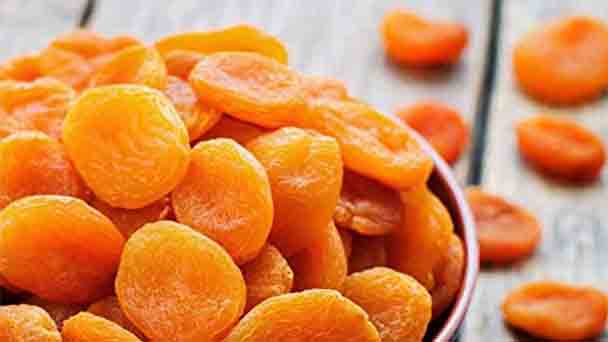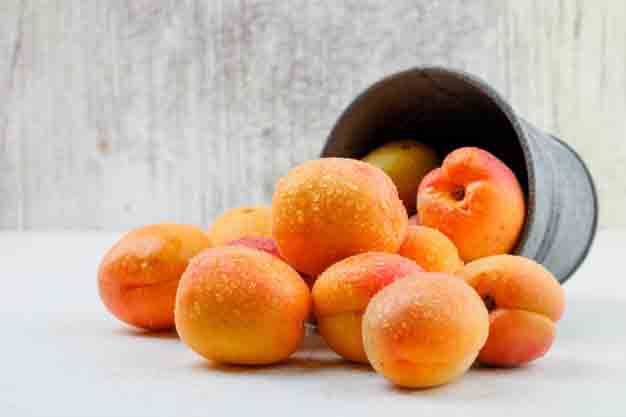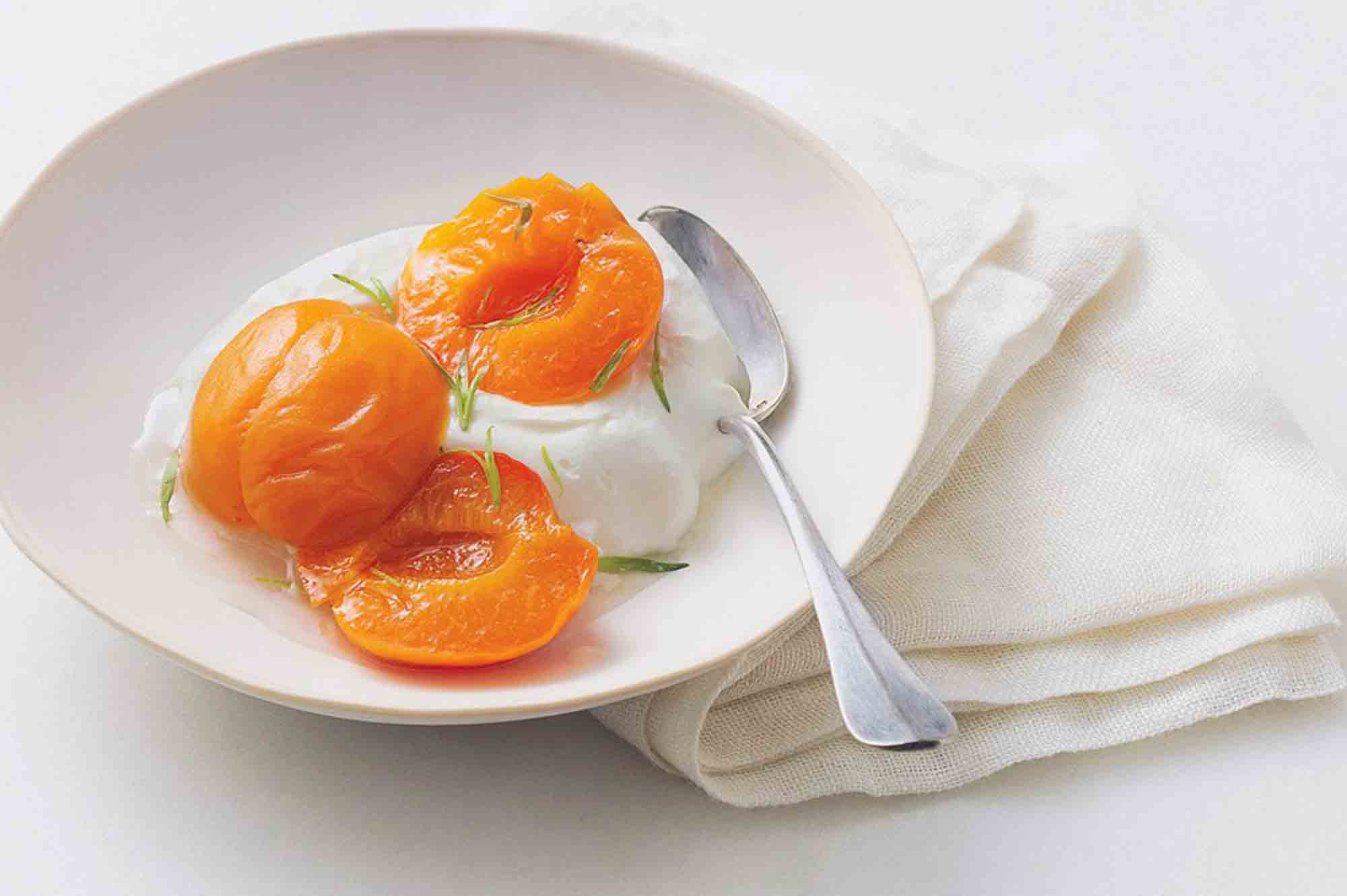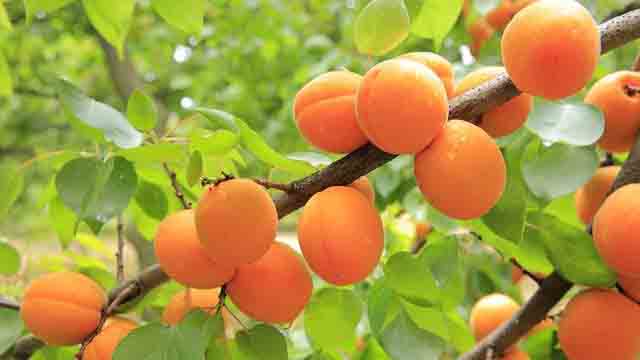Apricot Profile
Written by Joy
Nov 06 2020

Apricot is a deciduous tree. The ground is raw, the plants are glabrous. The leaves are alternate, broad-ovate, or round-ovate leaves with obtuse serrations on the edges; two glands near the top of the petiole. Pale red flowers are solitary or 2-3 connate, white or reddish. Round, oblong or oblate drupe, the skin is mostly white, yellow to yellow-red, and the sunward part is often flushed and spots; dark yellow flesh, sweet and juicy; smooth nuclear surface without spot holes, thick core with grooves. The seeds are bitter or sweet. The flowering period of apricot is from March to April, and the fruit period is from June to July.
Apricot morphological characteristicsApricot growth habit and growing environment and distributionApricot efficacy and roleThe garden value of apricotEdible value of apricotOtherApricot cultivationSowingGrafting
In a few areas, apricots are wild, and pure forests or mixed with Xinjiang wild apple forests are formed in Yili, Xinjiang. The altitude can reach 3000 meters. It is also cultivated all over the world. Apricot is an important economic fruit tree species and one of the common fruits. It is extremely nutritious and contains more sugar, protein and minerals such as calcium and phosphorus. It also contains provitamin A, vitamin C and B vitamins. Apricot wood is hard and is a good material for furniture; apricot branches can be used as fuel; apricot leaves can be used as feed. Apricot is based on seed breeding, and the seeds need wet sand stratification to accelerate germination when sowing. Apricot can also be grown by grafting seedlings as rootstocks.
Apricot morphological characteristics

The leaves of apricot trees are broadly ovate or round-ovate, 5-9 cm long, 4-8 cm wide, apex sharply pointed to shortly acuminate, base round to nearly heart-shaped, leaf edges are round and obtuse, and both sides are glabrous or The lower veins are pilose between the axils; the petiole is 2-3.5 cm long, glabrous, and the base often has 1-6 glands.
The flowers are solitary, 2-3 cm in diameter, opening before the leaves. The peduncle of the apricot tree is short, 1-3 mm long and pubescent; the calyx is purple-green; the calyx is cylindrical, and the outer base is pubescent; the sepals are ovate to ovate-oblong, apex sharp or obtuse, Reflexed after flowering; petals round to obovate, white or reddish, with short claws; stamens about 20-45, slightly shorter than petals; ovary pubescent, style slightly longer or almost as long as stamens, lower part Pilose.
The fruit of the apricot tree is spherical, sparsely obovate, about 2.5 cm in diameter, white, yellow to yellowish red, often flushed, and slightly pubescent. The pulp of apricot is juicy and does not crack when mature; the nucleus is oval or elliptical, flat on both sides, rounded and blunt at the top, symmetrical at the base, sparsely asymmetrical, slightly rough or smooth on the surface, rounded ventral edges, often slightly blunt, dorsal edges Straight, keel-shaped ribs on the abdomen; bitter or sweet in taste. The flowering period of apricot trees in March-April, and the fruit period is June-July.
Apricot growth habit and growing environment and distribution

Apricot trees are grown in various parts of China, and most of them are cultivated, especially in North China, Northwest, and East China. A few areas are wild. They grow pure forests in the Xinjiang Yili area or mixed with Xinjiang wild apple forests. The altitude can reach 3000 meters. It is also cultivated all over the world.
According to research, the apricot tree is native to Xinjiang, China, and is one of the oldest cultivated fruit trees in China.
Apricot efficacy and role
The garden value of apricot
Apricot blooms in early spring, first flowers and then leaves; it can be planted with green pine and emerald cypress on the lakeside of the pond or the side of the rocky cliff or in front of the courtyard.Edible value of apricot

Other
Apricot wood is hard and is a good material for furniture; apricot branches can be used as fuel; apricot leaves can be used as feed.Apricot cultivation

Sowing
You’d better choose land with deep soil, loose soil, and normal fertility. The sowing field is first turned over with a mountain plow, the rake is flat, and the plow is used to ditch for sowing. The row spacing is about 30 cm, and the sowing depth is generally 10-15 cm. The seed used per mu is about 25-40 kg. The sowing width is wide and narrow, that is, there is a blank row for every two rows. The seeds should be those that are fully mature and full of seeds collected in the year. If the apricot seeds are old, use clean water to remove stubborn seeds and moldy and deteriorating seeds before sowing, and increase the amount of seeding appropriately. The planting time is good in autumn and winter before the ground freezes, and the seedlings emerge neatly in the following year, and the apricot seeds do not need sand storage, which is simple and easy.Grafting

Choose the rootstock 5-10 cm from the ground, and cut it across the smooth surface without knots, so as to cut through the skin without hurting the xylem. Then cut the length 1.5 cm down from the transverse incision to the same depth as the transverse incision, making it a T-shape. Then use the knife to twist left and right along the longitudinal incision to pry the cortex. While prying the cortex with a knife, pinch the petiole of the bud with your left hand, gently press down the rootstock to be inclined, and pry the bud with a knife while inserting the bud. Do not rub on the rootstock when inserting buds to protect the growth point. And make the upper plane of the budding closely match the upper plane of the rootstock T-mouth.
After grafting, wrap it up with plastic strips.
Latest Updated
- Benefits of Bugleweed - 7 Science-backed Health Benefits
- Bugleweed Dangers & Side Effects - Is It Poisonous?
- How to Plant Evergreen Trees - What You Should Know
- When to Plant Evergreens - Grow Guide for Evergreen Trees
- 12 Wonderful Evergreen Shrubs for Your Garden
- 12 Popular Evergreen Plants with Pictures for Beginners
- When And How To Prune A Lilac Bush Like a Pro
- How to Grow & Care for Lilac Vine (Hardenbergia Violacea)
- Japanese Lilac Tree (Syringa Reticulata) Care & Propagation Guide
- Shumard Oak Pros and Cons - What to Know
Popular Articles
- Winter maintenance of Antirrhinum Majus
- How to Grow Terminalia Mantaly Tree
- How to Grow and Care for Crossostephium Chinense
- How to grow Antirrhinum Majus in spring
- Peristeria Elata (Dove Orchid) Profile: Info & Care Guide
- Underwatered Snake Plant (Sansevieria Trifasciata) - Signs And How To Fix
- How to Care for Brazilian Jasmine Plant (Mandevilla Sanderi)
- How to Grow & Care for Graptopetalum Purple Delight in Summer
- Rosa Chinensis (China Rose): Plant Growing & Care Tips
- How to Care for Baby Sun Rose (Aptenia Cordifolia)